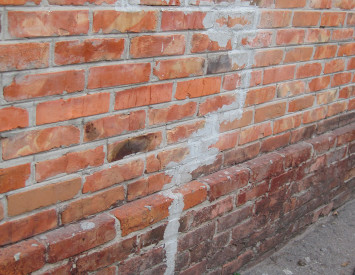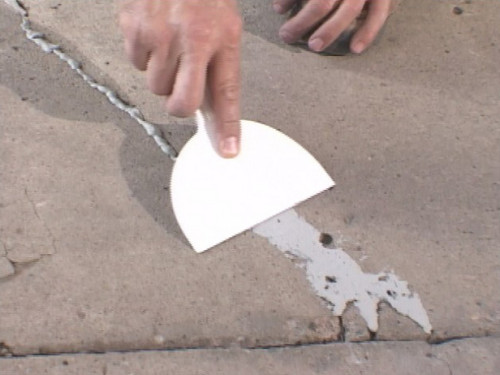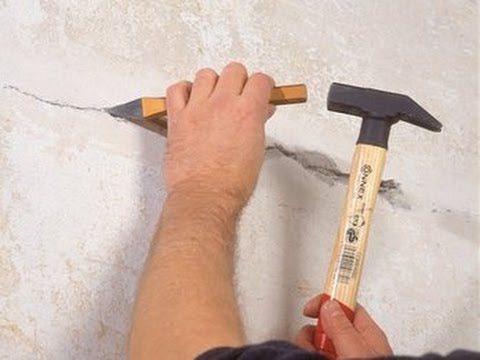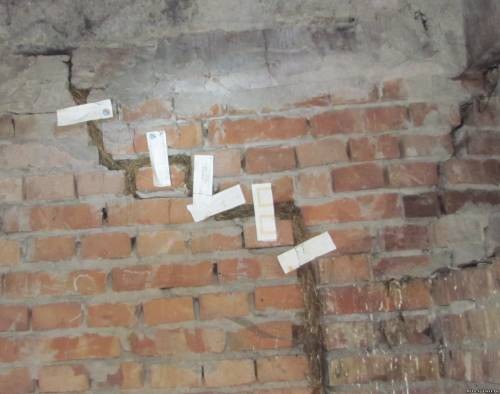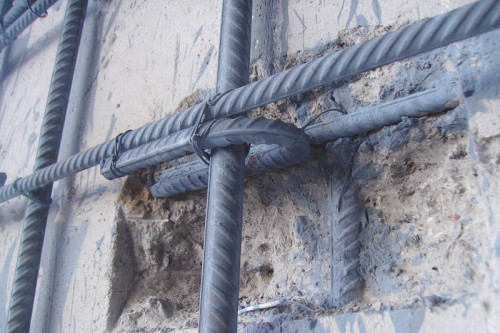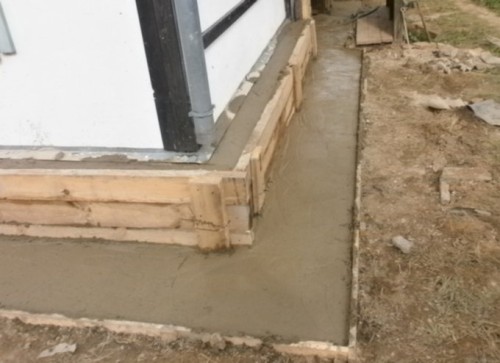There are several reasons for the appearance of cracks in the wall of the building. Only having determined the causes of their appearance, the depth and size is chosen by the method of eliminating the problem. The appearance of cracks in the walls indicates the negative processes flowing at the base of the house, immediate response is required.
Content
Timely measures taken to eliminate cracks and strengthen the foundation will prevent further destruction and stop deformation processes. The subsidence of the foundation leads to a bias of the carrier walls and the destruction of the whole house. For cracks in the brick walls, there are several repair methods that differ from the ways to eliminate them in concrete walls.
The causes of cracks in the walls of the house
Most often, the cause of cracks in the walls of the house is the deformation of the foundation or the general shrinkage of the house after construction.
- As a rule, two years after building a house to complete the process of natural shrinkage. Depending on the composition of the soil or internal soil changes, this process can be delayed or resumed after a while.
- The foundation of the foundation can be caused by leaching of the soil with soil waters. In such cases, before starting the repair of cracks, drainage is equipped in the walls along the perimeter of the foundation and waterproofing is made.
- Natural natural factors, such as a deep repeated freezing and defrosting of the adjacent to the foundation of the soil or the foundation itself can lead to deformation processes. To combat freezing, insulation of the foundation and blind area is used.
- In the case of design flaws and improper distribution of loads on the foundation, it also subsides and deformation. In this case, without global alterations and bringing in accordance with the norms of the sopromat of structural parts, one cannot do.
Cracks may appear in the case of use of poor -quality materials when laying the foundation or violation of the technology. With an uneven drying of concrete after filling the foundation, he loses his strength.
Elimination of cracks on the internal walls in the room
Small cracks up to 5 mm in width, which are not prone to an increase are eliminated very simply. Without global alterations and large repairs.
- The crack and kirochka are broken. All the poorly holding parts of the plaster, fragments of brick or concrete are removed. Then the crack is moistened with water and thrown by a cement mortar. After grasping and drying out the cement mortar, the crack is puttled with a plaster solution and is smoothed with finish putty.
- It is allowed to seal small cracks or cracks with mounting foam. After the foam is hardened, excess influxes are removed with a sharp knife and deepened by 2 cm. Then the site is covered with a cement mortar or plastered with putty.
Repair of medium cracks in the walls of the house
The average cracks are critical and require juicy measures. Such cracks and cracks will certainly increase, which threatens the destruction of the house.
- The work begins after the moment of extinguishing the expansion of the crack. In order to follow the progression and determine the moment of attenuation, beacons are installed on the crack, and then they monitor their integrity. Make lights from gypsum or a paper tape is firmly glued.
- Cracks are cleaned of garbage stuffed in them, all poorly holding pieces of masonry or fragments of a concrete wall are removed. Around the crack, plaster is removed to a brickwork or concrete. A cement mortar with small crushed stone is poured into the gap. Small pebbles of a suitable size are inserted into the gap and tamped with a hammer.
- Along the crack, holes are drilled at a distance of 15 cm from the edge. Anchors or crutches are inserted into the holes, to which a metal strip is attached - a lining. The ends of the strip are bent towards the wall and squeezed at the time of fasteners.
- Such horizontal pads are installed along the entire length of the crack with a step of 20 - 25 cm. A reinforcing metal mesh is installed on top of the linings and the damaged area is plastered.
Liquidation of large cracks in the facade wall and the foundation of the house
Large cracks, as a rule, touch the basement of the house. Therefore, their elimination in the walls is made simultaneously with the repair of the foundation.
- At the place of passing a large crack, a trench is born to the depth of the foundation and in a width of about 1 meter from the edges of the crack. All the masonry are removed or deformed bricks are removed. The crack is embroidered and cleaned of garbage.
- Work on the sealing of a large crack in the wall begins with the foundation. A cement-zero solution is filled into a crack in a crack in the foundation. Reinforcing crutches are clogged along the crack, and a lining of a metal strip or reinforcement is welded to them.
- In the case of subsidence, support beams are starting under it. For the beams, concrete pillars, a metal channel, an I -beam or a pipe are used. Book beams perpendicular to the length of the foundation. It is important that the beams protrude from the base by half a meter. Then they are tied with welding and a reinforcing rod. The formed platform prevents the further subsidence of the foundation.
- To eliminate the consequences of the harmful effects of moisture or frost, waterproofing and insulation of the foundation is done. The surface of the foundation is cleaned of dirt and covered with waterproofing mastic. For insulation, any material suitable for operation in the ground is used. It is convenient to work with polystyrene foam, mineral wool, etc. Along the way, a drainage system for the removal of ground and sedimentary waters is made. Then a blind area is made at least 0.5 meters wide.
- Having finished with the foundation, the gap in the wall is embedded. Inaccessible narrow spaces are filled with cement injections. To do this, inch holes are being drilled along the entire length of the crack with a step of 20 - 25 cm and filled with cement mortar. A special injection syringe is used to fill the wells. It is a metal pipe with a piston and rubber seal. A cement mortar is typed in it and inaccently inaccessible.
The selected brick evenly fits in the same place. If necessary, you can add a new brick or fill the space with stones. Masonry is made with a brick lock with the inclusion of metal ligaments from scraps of reinforcement or stripes.
